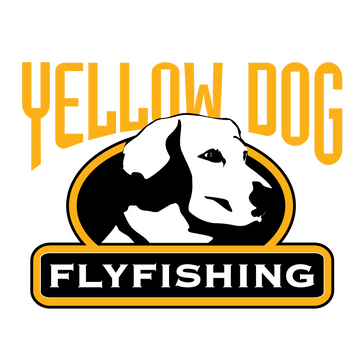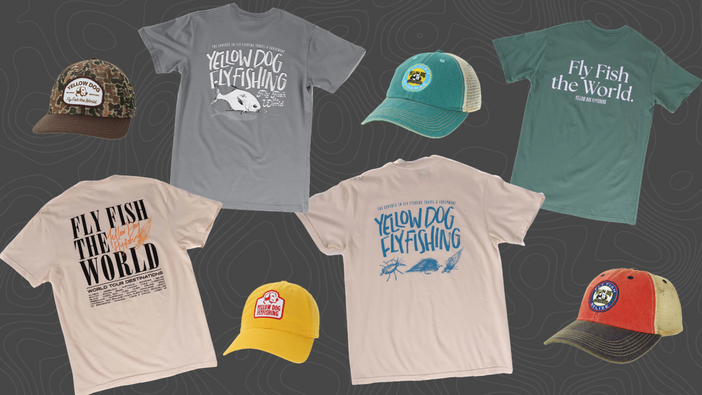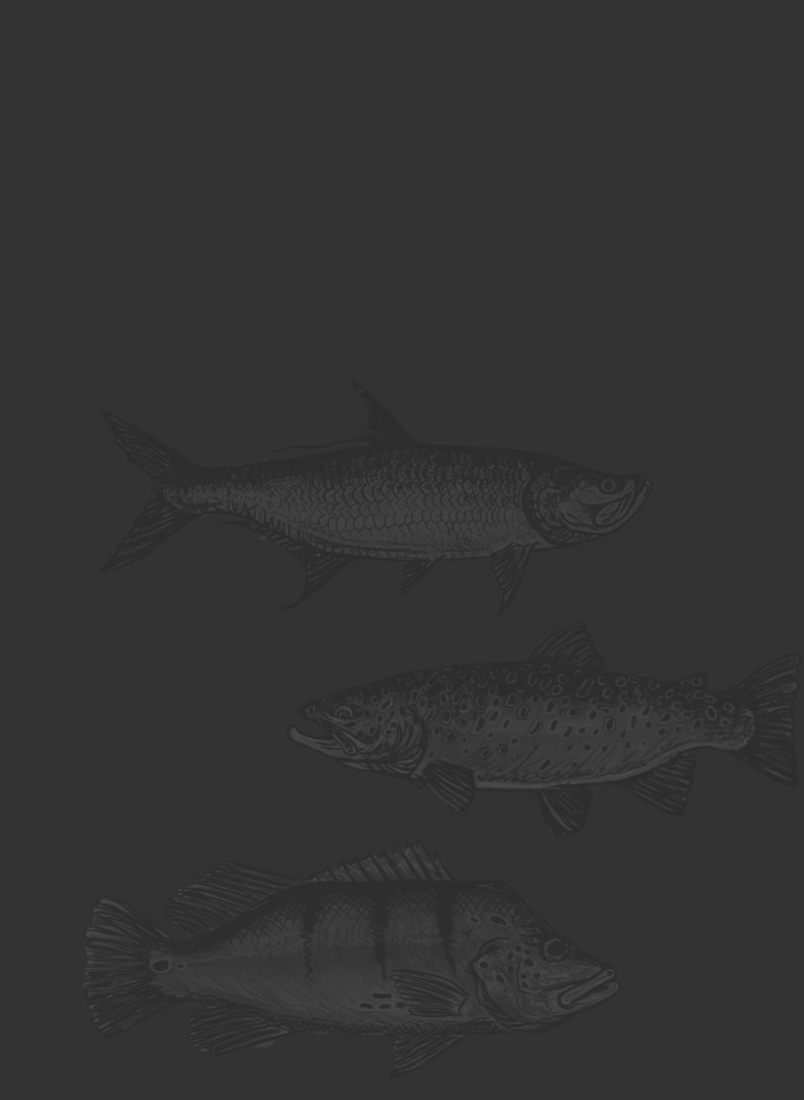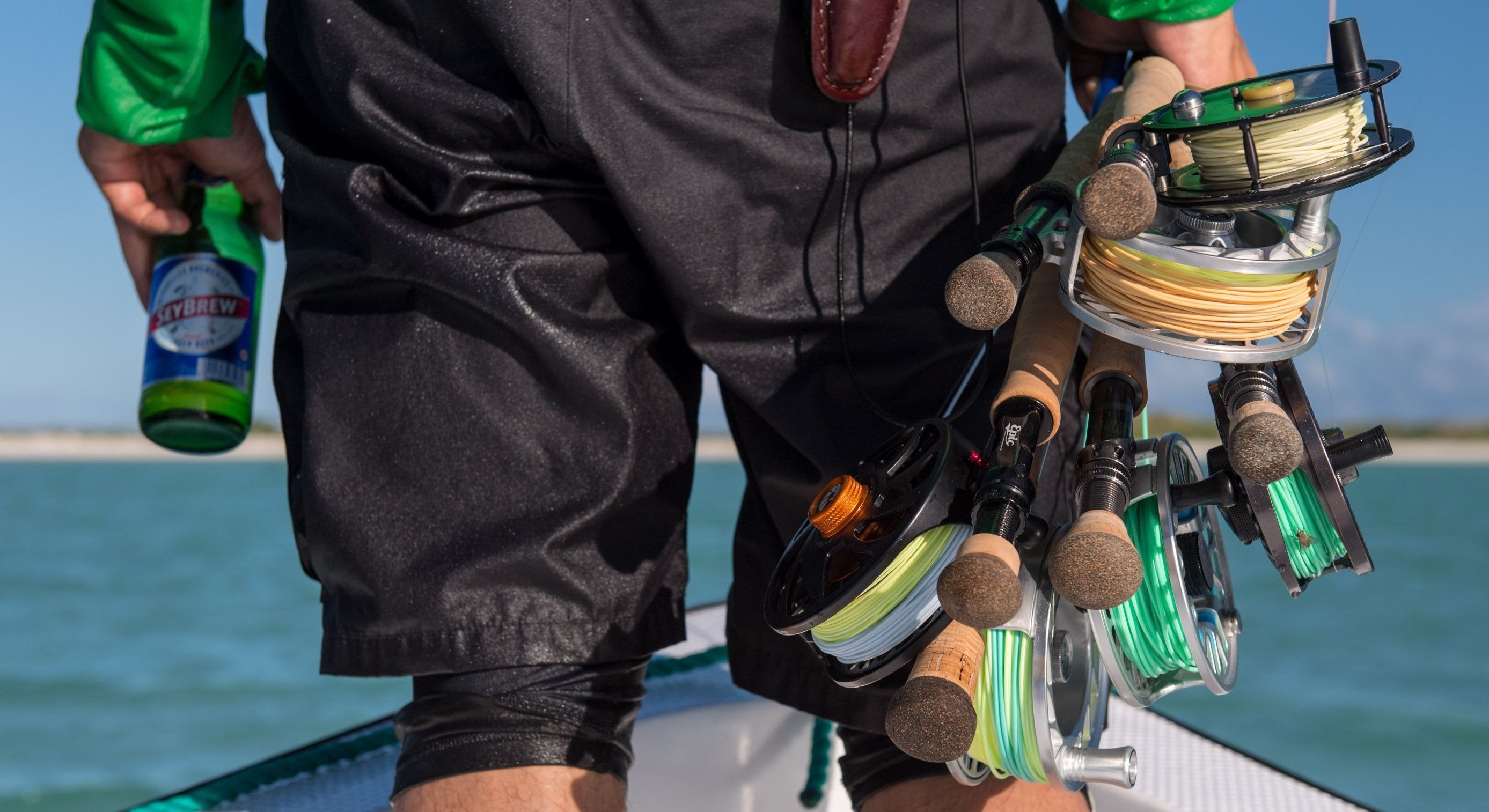Seemingly created and designed with fly fishers in mind, the tiny country of Belize is home to some of the finest saltwater flats fishing on the planet. The entire coastline of this beautiful Central American country – from the northern waters of Ambergris Caye, to the central waters of Turneffe Atoll and the Belize City area, and all the way south to Hopkins, Placencia, and Punta Gorda – hosts a broad range of species and a variety of different fishing scenarios.
Bonefish, permit, tarpon, snook, snapper, jacks, barracuda, and numerous other species can be found along Belize’s coastline in fisheries ranging from skinny, white sand flats, to shallow-water lagoons, to deep, mud-covered tarpon fisheries. This overall level of angling diversity truly sets Belize apart from every other Caribbean fishing destination. Whether you are looking for your first saltwater fly fishing destination or a passionate long-time angler, Belize has everything and more.
Belize Fly Fishing Species
Bonefishing in Belize
Built for speed, the bonefish has a forked tail and a fusiform-shaped (tapered at both ends) body. Their sheer quickness and capacity to pivot and accelerate easily back their ability to avoid being eaten by larger predators such as barracuda. Bonefish also use camouflage to avoid being eaten, using mirror-like scales to reflect their surroundings.
While the Belize bonefishing season is virtually year-round, the April through November timeframe is one of the best times to experience decent-to-great bonefishing days. While the December through March window is considered the overall “peak” season for Belize, this has more to do with escaping the winter weather in North America than anything else. Regardless of the time of year, we recommend booking early in order to lock in the best dates, guides, and locations. In addition, anglers should consider the tides.
With Belize’s barrier reef running the entire length of the country’s coastline, the opportunities to fish for bonefish are virtually endless. The typical flats found throughout Belize are usually light-colored sand with patches of turtle grass – an environment that provides exceptional habitat for bonefish. The tried-and-true bonefish rod is the 8-weight; however, a 7-weight fly rod can be used, and a 9-weight is useful during windy days.
As far as flies go, small shrimp imitations, Christmas Island Specials, and Crazy Charlies (sizes 4 and 6) will get the job done in most situations. We recommend anglers incorporate some flies with weed guards attached for fishing over turtle grass. A mix of bead-chain eyes and small lead eyes should cover most scenarios, with a few unweighted flies for ultra-skinny water.

Permit Fly Fishing in Belize
Fly fishing for permit can be described as frustrating, heartbreaking, and more than a little addicting. It’s the ultimate test of skill and patience, as the fish are naturally wary and ultra-selective. Like bonefish, permit don’t have teeth. Instead, they have rubbery lips that they use to grab their prey and suck the food into crusher plates in the back of their mouth before swallowing. Thus, prey with hard outer coverings, such as crabs, shrimp, and snails, dominates their diet. Permit can be found cruising in channels, offshore near wrecks and structure, and also feeding on shallow turtle grass and sand flats. As with bonefish and tarpon, anglers can at times target permit in big schools, but larger fish are generally found solo or swimming in pairs.
For those wanting to focus specifically on permit on the fly, the waters of southern Belize are arguably the finest in the entire world of saltwater fishing. While other species are found throughout the area, it should be understood that the fishing in locations such as Punta Gorda, the Hopkins area, and the South Water Caye Marine Reserve is focused almost entirely on permit.
This means that as a stand-alone trip, a permit trip may not be for everyone – unless you’re someone who really wants shots and chances at permit on a fly! There are prime permit flats found all throughout southern Belize, many less than thirty minutes from some of the best fishing lodges in the Caribbean. In northern Belize, Ambergris Caye and the Caye Caulker area also offers large numbers of permit. Finding schools of 15 to 20 permit (many in the 5-to-10 pound range) is common in the northern part of the country. When the weather and conditions cooperate, anglers may find anywhere between 10 to 15 shots at permit each day.
Even though the large schools of permit are primarily juveniles, there are larger adult ones mixed in as well. For a first-time permit angler, Ambergris Caye is a great place to land your first fish. Permit can be targeted year-round in Belize, but your chances may improve in the late spring and early summer months and during the mid-fall timeframe. Anglers wishing to target permit in Belize should bring a 9-weight fly rod and use 16-20 pound fluorocarbon tippet.
Tarpon Fly Fishing in Belize
One great thing about tarpon (both in Belize and all throughout the Caribbean) is that they will eat just about anything when they are hungry and on the hunt! In addition, they use many habitats as they grow from juvenile to adult fish. Juvenile tarpon in Belize can be found in all sorts of situations – from backwater lagoons and ponds to mangrove creeks and deeper channels. As they grow older, tarpon begin to expand their territory to include estuaries, offshore locations, and even far up freshwater rivers. We recommend first-time or inexperienced anglers check out Yellow Dog's 7 must-know tips for tarpon fishing.
Landing a tarpon on a fly can take minutes or as long as an hour, depending on the size and attitude of the fish. When fishing for tarpon in Belize, prepare yourself for a fight and enjoy the experience. Remember that whenever possible, you should land the tarpon quickly and carefully. Like bonefish and permit, in a weakened state, tarpon are easy prey for predators.
The late spring and summer months are generally the best time of year to target tarpon on the fly in Belize. April and May can offer exceptional fishing in the area around Belize City and Long Caye. While juvenile fish can easily be landed utilizing a lighter rod such as a 9 or 10, be sure to bring an 11-weight coupled with an intermediate or floating fly line for the larger, migratory fish.

Other Species
There are several other species of gamefish anglers can pursue on a Belize fly fishing vacation. The barracuda is one of the most exciting and underrated species to target on a fly. Extremely aggressive in nature, long and fast strips using “tube flies” or large baitfish patterns will entice destructive eats. Often heard crashing through a school of baitfish well before you see them, snook can be found sneaking through thick, mangrove-lined creeks. Once hooked, you’ll have a great time trying to control the fish and keeping it away from tucking itself deep in the mangroves!

Traveling to Belize
Nowadays, no matter where you travel from your home country, you need a valid and current passport. A valid passport is required for all international visitors to Belize and must be valid for at least six months beyond the duration of your stay. International flights to Belize City’s Philip Goldson International Airport (BZE) go through Miami, Dallas, Houston, Atlanta, Denver, Los Angeles, Newark, Chicago, and Charlotte. The major airlines currently servicing and flying to Belize in the immediate future are American Airlines, United, Southwest, Jet Blue, and Delta.
Tropic and Maya Air offer hourly flights from Belize City to other parts of the country. Some of our lodge operations, such as Belize River Lodge and Tarpon Sands, do not require an additional flight out of Belize City. If traveling to Ambergris, Placencia, or Punta Gorda, both domestic airlines provide a quick and easy connection out of the Belize City airport. Another method of travel is by water taxi, which is generally a popular option for transportation in northern Belize from the mainland to the outer islands such as Turneffe Atoll.
The Climate of Belize
Belize has a general subtropical-to-tropical climate, with pronounced wet and dry seasons. However, it is important to note that there are significant variations in weather patterns by region and along the reef islands versus inland areas. Temperatures vary throughout the year according to elevation, proximity to the coast, and the moderating effects of the northeast trade winds off the Caribbean. Average temperatures in the coastal regions range from lows of 75 degrees during the early winter months to 88 degrees throughout the summer. Temperatures are slightly higher inland, except for the southern highland plateaus, such as the Mountain Pine Ridge, where it is noticeably cooler year-round. The seasons are marked more by differences in humidity and rainfall than in temperature.
Rainfall in Belize varies from an average of 50 inches in the north to more than 175 inches in the extreme southern part of the country. The dry season usually extends from February to May, with the rainy season arriving during the month of June and lasting through the end of the year. There is usually a slight dry spell in August to early September after the initial onset of the rainy season, a period is known locally as the “little dry.” There is also hurricane season, which can most definitely affect the area. While statistically, Belize does not attract many major direct hits, it does get its share of severe tropical weather with high winds and rain.
While hurricanes can technically impact the area any time from June through late December, the months of September and October are considered the most likely time for major storm activity. That said, serious storms are rare in Belize, and only a handful of hurricanes have hit the area in the past 100 years. If you plan a trip to Belize during the fall season, excellent fishing – along with fewer anglers and low amounts of angling pressure – can make for a productive trip. However, we always recommend a trip insurance policy in the event of severe weather.
Recommended Gear for Belize
BONEFISH: The go-to rod for bonefishing is an 8-weight, while a 7 would do well with lighter flies on a calm day. A 9-weight is always good to have on hand for those windy days or for casting heavier flies, but this isn't common in Belize. All rods should have floating lines.
Be sure to have a good selection of bonefish flies in various sizes, colors, and sink rates. The standard sizes for bonefish flies in Belize are #4, #6, and #8, with a general rule being the shallower the water, the smaller and lighter the fly.
A few recommended flies:
- Gotcha (#2, 4, 6, 8)
- Sili Legs (#4, 6)
- Puff Fly (#4, 6)
- Gotcha Clouser (#4, 6)
- Christmas Island Specials (#6)
- Squimp (#6, 8)
A standard 9-foot, 12-pound tapered leader works well for most bonefish, but we recommend also bringing 10-16 pound leaders and tippet.

PERMIT: Many permit anglers opt for a 9-weight rod, though a 10-weight is very helpful when casting heavier flies in windy conditions. For this style of permit fishing, a floating line will be used.
A large selection of crab and shrimp patterns in various sizes, colors, and weights. Tan, olive, and various shades of brown seem to be the most effective colors for most Belizean waters. Be sure to have a variety of different sink rates with different-sized eyes. Heavier flies are common for permit fishing as it is absolutely crucial for flies to reach the bottom quickly when the fish are tailing.
A few recommended flies:
- Bauer Crab (#4)
- Raghead Crab (#2, 4, 6)
- EP Crab (#2, 8)
- Turneffe Crab (#4, 6)
- Peterson’s Spawning Shrimp (#4)
- Puglisi’s Spawning Shrimp (#2, 4)
- Camo Crab (#4, 6)
When fishing for permit in areas like Placencia or Punta Gorda, anglers would be wise to bring flies with weed guards due to an abundance of coral and turtle grass. Flies without a weed guard will likely snag - the last thing you could ever want when stripping your fly in front of a hungry permit!
A 9-foot, 16-pound tapered leader is a common leader setup, although we recommend a range of leaders and tippet between 12 to 20 pounds.
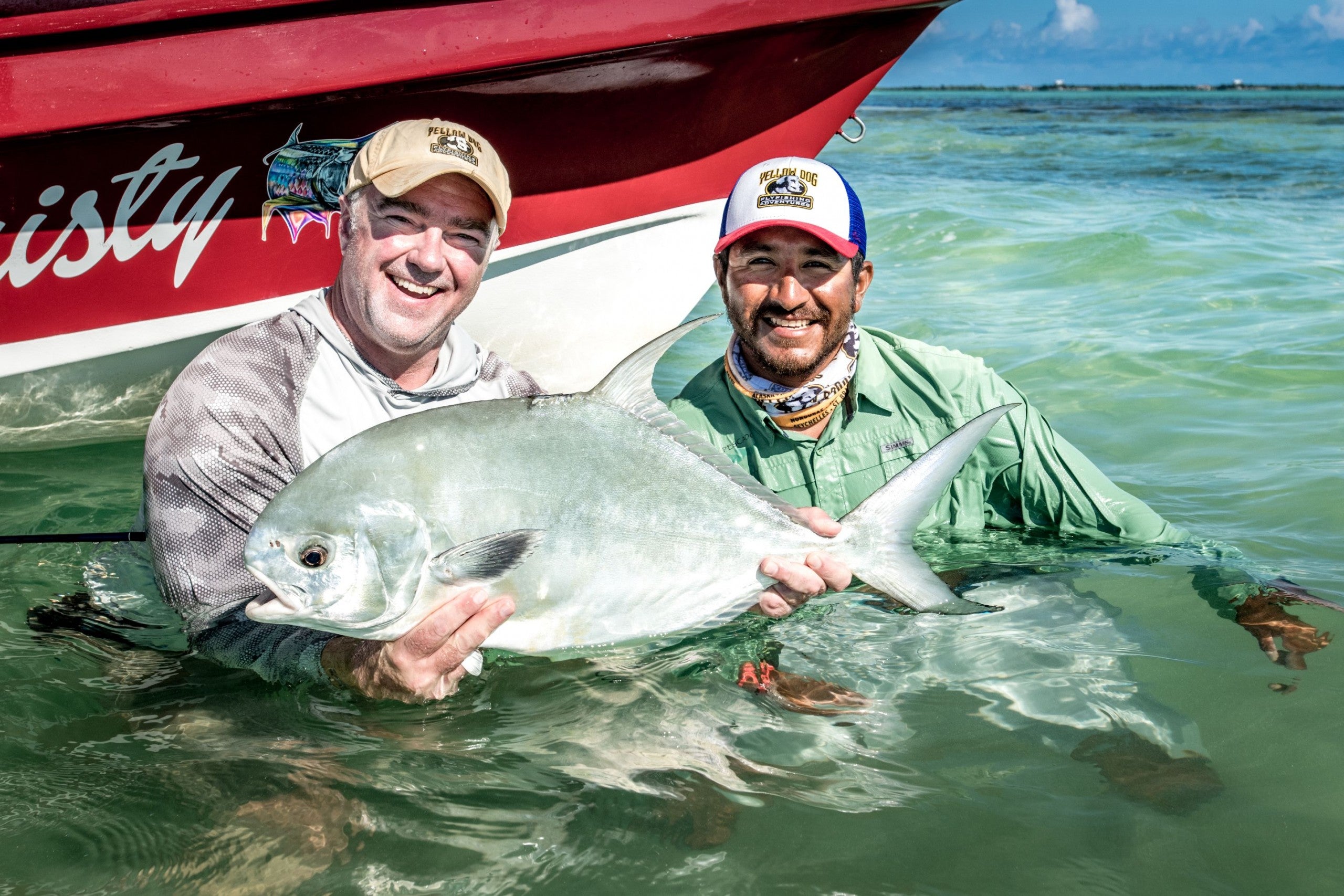
TARPON: For juvenile tarpon in the 5-10 pound range, an 8 or 9-weight rod will work well. However, for larger fish, we recommend a 10 or 11-weight. For those really large migratory fish, an 11-weight is a must to ensure you are able to get the fish in quickly to ensure a healthy release. We recommend you bring both floating and intermediate lines.
A basic selection of tarpon flies in a variety of colors and materials. Sizes 2/0 and 3/0 will cover most tarpon situations throughout Belize.
A few recommended flies:
- Tarpon Toad (#2/0, 3/0)
- Cockroach (#3/0)
- EP Peanut Butter (#2/0, #3/0)
A 10-foot, 20 to 40-pound tapered leader will work well in most conditions. The key in tarpon fishing is a heavier butt-section while having no more than a 20-pound bite tippet to break the fish off in the event of predators or the line wraps around the angler. This ensures the safety of both the fish and the angler.

SNOOK: Your permit or tarpon rod will work well here--a 9 or 10-weight rod with a floating line.
Selection of bright flies in red, orange, yellow, chartreuse, white, and saltwater poppers. Check out the 7 Best Snook Flies or use some standard tarpon patterns in a pinch.
A few recommended flies:
- Pearly Poppers (#2/0, 2)
- Big Fish Deceivers (#4/0)
- Clouser Deep Minnows (#2/0, 2)
A 9-foot, 16-pound leader will work well for most snook scenarios. A heavier leader or bite tippet may help in the fight, as snook are notorious for trying to break off your line in the mangroves!

OTHER SPECIES:
- Barracuda: 10-weight with floating line and a 20-pound tapered leader with wire tippet. Tube flies work well for barracuda--don't stop stripping!
- Jacks: Jacks are aggressive and proper delivery is more important than the fly. A 9-weight will work well here, although a 10-weight would be helpful for large jacks. A floating line with a 9-foot, 16-pound tapered leader is ideal. Your tarpon or snook flies will work well here, although fishing for jacks on poppers (#2/0, 2) is the way to go.
- Triggerfish: These fish are tough to catch! Your permit setup is perfect for triggerfish, but an 8-weight would work fine if you spot a trigger on the flats. A floating line with a standard 12-16 pound leader, these fish will regularly eat the same shrimp and crab patterns in your permit box. Often found over coral, these fish are experts at breaking off flies.
+ View the Belize Equipment Lists

Overview of the Belize Fisheries
Ambergris Caye
Running parallel to the Mesoamerican Barrier Reef, Ambergris Caye is the largest of the more than 200 islands that dot the country of Belize and by far the most popular tourist destination in the country. The waters that surround Ambergris and San Pedro offer some of the finest saltwater flats fishing in the entire country, and our lodge partner at El Pescador has been championing this fishery for decades. Another fantastic option is Victoria House, offering some of the finest accommodations in San Pedro.
While bonefish, permit, snapper, jacks, and numerous other species are found throughout these northern waters year-round, this area is best known for its consistent tarpon fishing. Home to the largest “classic-style” tarpon flats found anywhere in the world outside of South Florida, Ambergris is one of the few spots in the Caribbean where tarpon can be sight-fished year-round. The permit fishing in the area can also be productive, and the shallow lagoon on the backside of Ambergris is home to large schools of smaller five-to-ten pound permit that – when found – will readily chase large shrimp and Gotcha-type patterns.

Belize City and Olde Belize River
Although it’s no longer the official capital of the country, Belize City is still the main gateway to everything on Belize’s mainland. Home to Philip S.W. Goldson International Airport, the region’s largest hotels and country’s major cruise ship terminal, roughly half of Belize’s population still resides in the immediate Belize City area. Aside from the claim of being the “birthplace of fly fishing” for the entire region, the fishery that surrounds Belize City may also hold the title of “Tarpon Capital of Central America” – from the dark and muddy flats that spill out from the mouth of the Olde Belize River to the crystal-clear waters of Long Caye, St. George’s Caye and numerous other off-shore islands.
The mouth of the Olde Belize River drains into a large, shallow, and often-times off-colored delta. This wide, muddy bay can hold impressive numbers of large tarpon throughout the year, with the spring months offering the best action for both numbers of fish as well as size. Only a couple of miles offshore from the main coast and Belize City itself, the water begins to clear, and the first classic-style bonefish and permit flats begin to form.
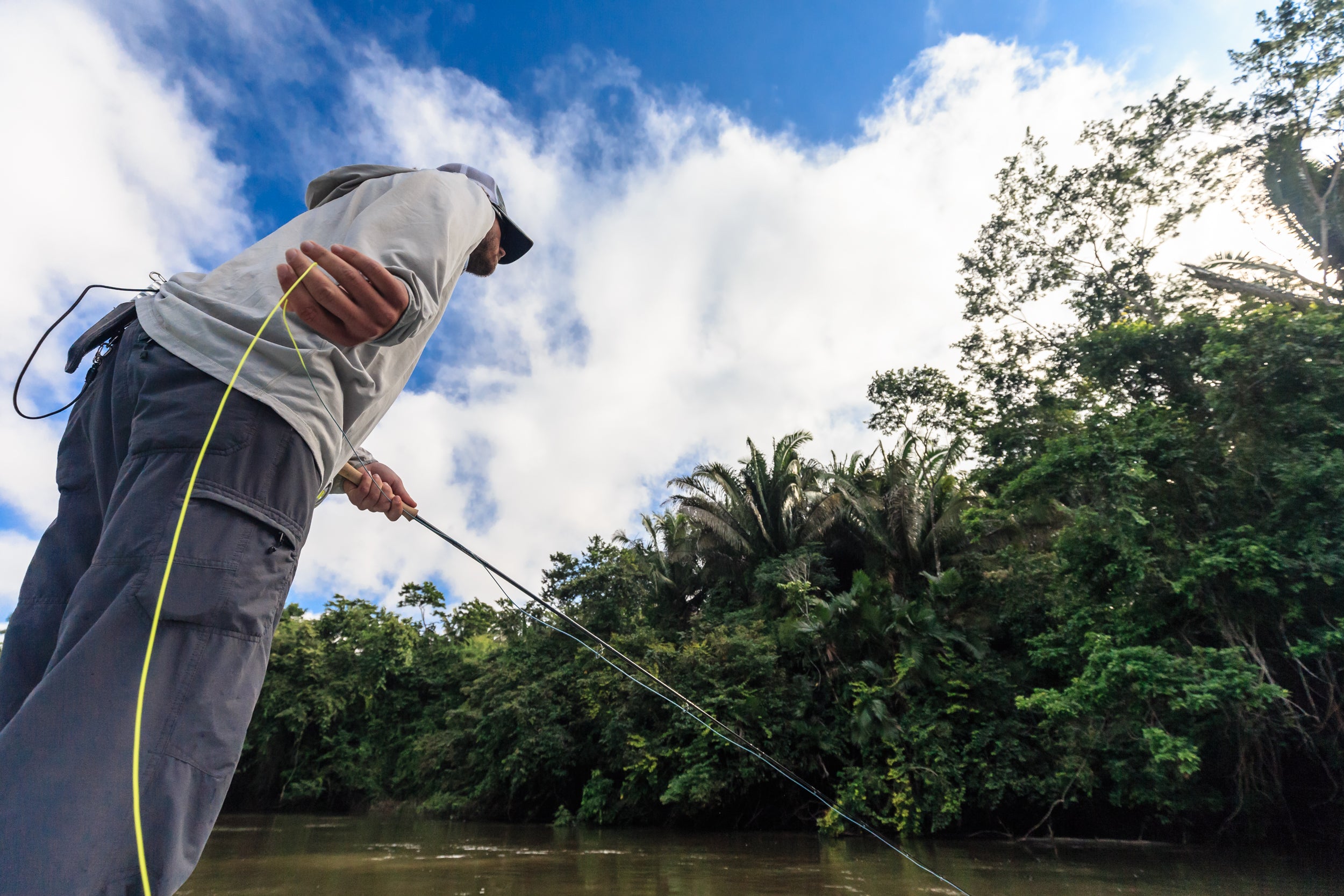
Caye Caulker
Located approximately 20 miles north-northeast of Belize City on the edge of Belize’s Barrier Reef, Caye Caulker is a five-mile-long island just south of Ambergris Caye. A sandy, limestone coral outcropping, Caye Caulker is divided into two parts by a small channel (The “Split”) that bisects the island. The north end of Caulker is mostly undeveloped mangroves, while the south end is home to the laid-back and funky beach town of Caye Caulker Village. The island’s motto is “go slow,” a mindset that has come to define pretty much everything that happens there.
Much like the waters surrounding Ambergris Caye, the waters of Caye Caulker are probably best known for tarpon. Within minutes of leaving the island, anglers can easily be poling their way across healthy, classic-style tarpon flats: four to six feet deep, covered with sand and mottled turtle grass, with waters that are usually crystal clear. In addition to the area’s healthy tarpon fishery, there are also great permit opportunities in the waters close to Caye Caulker. In this area, permit are usually found in three-to-six feet of water, cruising and feeding over a variety of different bottoms, including shallow grass, hard, crunchy bottoms, and even submerged rock structures and caves. As for the bonefishing in this area, it is available throughout the year, although somewhat limited in the size of the fishery.

Turneffe Atoll
Located roughly 25 miles east of Belize City and the Belizean mainland, Turneffe Atoll is the largest and most biologically diverse coral atoll in the Caribbean. Over 30 miles long and 10 miles wide, Turneffe is also one of the most untouched and least developed marine ecosystems in all of Belize. Turneffe has a fascinating history, and archeological studies indicate that the Mayans inhabited the atoll in fishing and trading settlements as early as 400 A.D. Turneffe was even rumored to have been a favored hideout for the notorious pirate, Blackbeard. The shallow waters found on the outer, ocean-side edges of the atoll are perfect for wade fishing: expansive sand and rubble flats that offer the ideal habitat for bonefish, permit, and a host of other species.
The inner flats, protected creeks, shallow lagoons, and huge expanses of intact mangrove and seagrass habitat collectively make Turneffe’s interior lagoon waters one of the most important nursery areas in the legion for dozens of fish species. Because of the ecological value of this ecosystem, the entire atoll was designated as a Marine Reserve area in 2012, becoming the country’s largest, most significant marine protected area to date. Yellow Dog is pleased to offer lodge packages to both Turneffe Flats Lodge and Turneffe Island Resort.

Dangriga and Hopkins
Dangriga is the capital of Belize’s Stann Creek District and the largest town in all of southern Belize. The Dangriga and Hopkins area has become world-famous for its permit fishing, with hundreds of shallow, turtle grass-covered, classic-style permit flats that are found just off-shore in the waters surrounding the barrier reef. In this specific marine area – thick with tiny cayes and islands connected and joined by countless flats – good numbers of permit can be found year-round: often tailing, cruising, and feeding in clear, shallow waters.
Both Dangriga and Hopkins are ideal stepping-off points for anglers looking to fish these productive waters, and many of the best flats are found less than 30 minutes off-shore from the mainland. While other species are found throughout the area, fly fishing in this region is definitely focused on permit, hence the development of Belize Permit Club. That said, there are some small schools of bonefish in the shallows surrounding the cayes and decent numbers of resident tarpon that can be found year-round.

Placencia
Placencia has been synonymous with world-class permit fishing for years: The area is home to some of the most textbook permit flats and the finest, most experienced guides in all of Central America. The area has earned a reputation as not only a great place to fish but also a place where anglers can learn the intricacies and secrets of technical flats fishing from some of the best guides in the business. The shallow waters offshore of the Placencia Peninsula near the Barrier Reef are home to a vast network of hard-bottomed, sand-and-turtle grass flats that are ideal for wading and sight-fishing.
Most of these areas are a 30-to-45 minute run from the village of Placencia. Surrounded on all sides by deep blue water, these southern flats have always been known for attracting some of the largest permit found anywhere in the country. A number of the nearby mangrove islands, cuts, and channels also hold good numbers of tarpon that can range in size from 20 to 80+ pounds. Schools of bonefish can occasionally be found throughout the cayes for those anglers interested in pursuing the elusive Grand Slam. All in all, this area of southern Belize offers great diversity in fishing scenarios and opportunities, including extensive flats, mangrove islands, access to the largest barrier reef in the Western Hemisphere, and a plentitude of backcountry rivers and lagoons tucked along the mainland coast.

Punta Gorda
Punta Gorda is the southernmost town in Belize and the capital of Belize’s Toledo District. Small, quiet, and almost completely untouched by tourism and resort marketing, this sleepy fishing village offers a rare look at the Belize of Old – a marked contrast to the development boom farther to the north and a place where little has changed. Punta Gorda is a pleasant and interesting town with its cool breezes and friendly, laid-back attitude. The pace of life is slow and easy-going, traffic is minimal, and no one ever seems to be in a hurry. Fishermen that visit the area come for its world-famous permit fishing, and there are a number of great lodging options both in town and close to town. For anglers who are serious about catching permit on the fly, the waters directly off-shore of Punta Gorda are arguably the finest in the Caribbean. While other species are found throughout the area, the fishing here is focused on permit. That means that as a stand-alone trip, fishing in the P.G. area is not for everyone and is perhaps best suited for those who really want to focus on catching permit on a fly in a classic flats-style scenario.

Whether you are interested in your first bonefish, casting at tailing permit, or jumping tarpon, Belize has it all to offer. With so many locations to choose from, there is no doubt the perfect destination is out there for you. Better yet, get a taste of all Belize offers and take advantage of the country's quick domestic flights to another destination. Only have a day or two to fish? No problem--book a day trip today!
Related Articles:
- 15 Facts You Most Likely Didn't Know About Belize
- 11 Important Tips For Your Next Saltwater Fly Fishing Trip
- Northern Belize Equipment List
- Southern Belize Equipment List
- Saltwater Fly Fishing Leader & Tippet Guide
- Belize Recommended Gear Guide: Everything You Need
- The Top 13 Permit Flies for Fly Fishing Around the World
